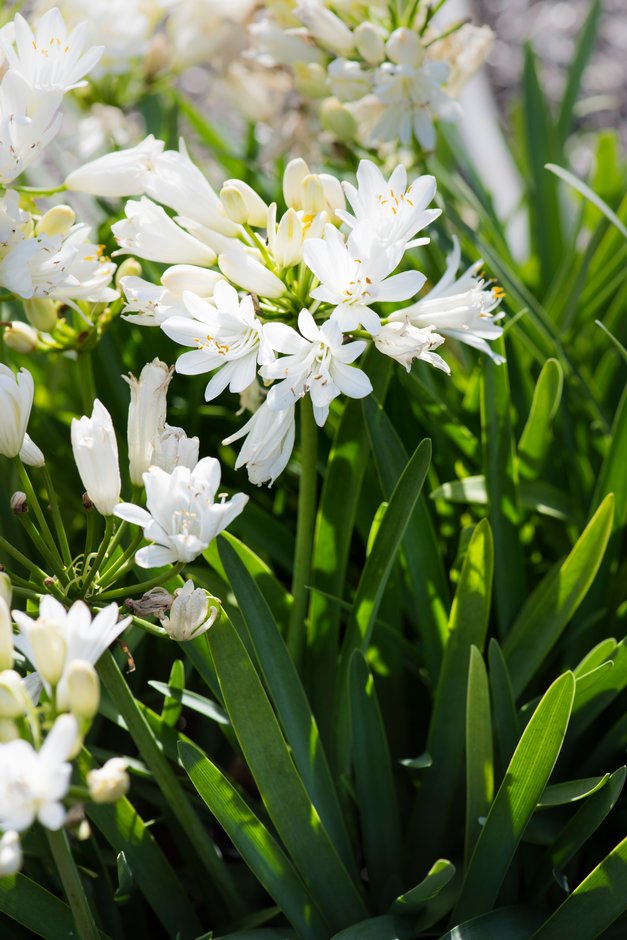Agapanthus Double Diamond ('Rfdd'PBR)
African lily [Double Diamond]
A compact perennial, to 25cm tall, with narrow, strap-like leaves and erect stems bearing a rounded cluster of funnel-shaped, white flowers in late summer
Size
Ultimate height
0.1–0.5 metresTime to ultimate height
2–5 yearsUltimate spread
0.1–0.5 metresGrowing conditions
Moisture
Moist but well–drainedpH
Acid, Alkaline, NeutralColour & scent
| Stem | Flower | Foliage | Fruit | |
| Spring | Green | |||
|---|---|---|---|---|
| Summer | White | Green | ||
| Autumn | Green | |||
| Winter |
Position
- Full sun
Aspect
West–facing or East–facing or South–facing
Exposure
Sheltered Hardiness
H3Botanical details
- Family
- Amaryllidaceae
- Native to GB / Ireland
- No
- Foliage
- Deciduous
- Habit
- Bushy
- Potentially harmful
- Humans/Pets (dogs, cats): harmful if eaten. Wear gloves and other protective equipment when handling. For further information and contact numbers regarding pets, see the HTA guide to potentially harmful plants
- Genus
Agapanthus are clump-forming perennials with narrowly strap-shaped leaves, evergreen in some species, and erect stems bearing umbels of funnel-shaped blue or white flowers
- Name status
Trade
How to grow
Cultivation
Grow in fertile, moist but well-drained soil in full sun or grow in a container. In cold areas, mulch well overwinter. For further guidance see Agapanthus cultivation
Propagation
Propagate by division every 3 to 4 years in spring
Suggested planting locations and garden types
- Coastal
- Cottage and informal garden
- Patio and container plants
- City and courtyard gardens
- Flower borders and beds
- Banks and slopes
Pruning
No need to cut down in the autumn, as the seedheads look attractive over winter
Pests
May be susceptible to slugs and snails and agapanthus gall midge
Diseases
May be susceptible to a virus
Get involved
The Royal Horticultural Society is the UK’s leading gardening charity. We aim to enrich everyone’s life through plants, and make the UK a greener and more beautiful place.
